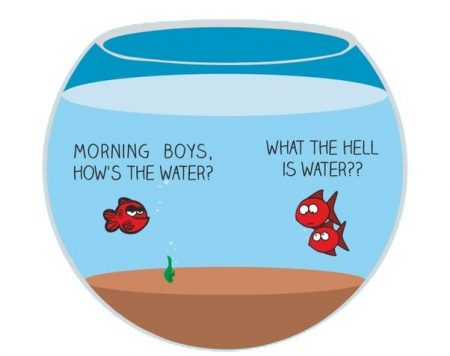Bye-Bye Skeptics, Hello 2021
Much has been said about the long-term effects of Covid-19 on the business world. Statements like “The modern office is history” or “retail is dead, long live eCommerce” are casually tossed in the air. True or not, we have seen strong underlying changes taking place in areas you wouldn’t necessarily expect.
At TASC Consulting & Capital, we’ve assisted dozens of traditional enterprises and government agencies with planning and executing business resilience strategies, and in some cases, turn lemons to lemonade. During the pandemic, we’ve seen those organizations being forced to adopt fast and disrupting changes to their operational models and organizational culture. While the challenges and solutions varied between industries, we’ve noticed a few common paradigms shifts that business leaders should take into consideration.
1. The first rule of innovation is: you do not talk about innovation
Working with those organizations for years, we’ve seen many executives talk about being innovative, devising innovation strategies, launching innovation labs and other initiatives. This agenda was often encountered with either eye-rolling conservatism or ill-equipped agents of change, at best. Quickly testing and adopting operational changes was an inspirational goal, not a daily reality.
During the pandemic, two interesting things changed in those organizations. No-one is talking about innovation anymore, and everyone is doing it. Ironically, much like fish are unaware of the water surrounding them, organizations are submerged in rapid changes and don’t even refer their new endeavors as innovation. The majority of skeptics and naysayers were dissolved into thin air. Countless bureaucratic barriers and  psychological setbacks regarding what can or can’t be done, became faint memories of a naive past. Digital transformation is no longer a choir or a millennial trend, it’s at the core of every business unit’s agenda and 2021 budget, with growing confidence and bullish goals.
psychological setbacks regarding what can or can’t be done, became faint memories of a naive past. Digital transformation is no longer a choir or a millennial trend, it’s at the core of every business unit’s agenda and 2021 budget, with growing confidence and bullish goals.
For a short time period, Digital changed from an important channel to the ONLY channel. We’re seeing non-techie executives initiate discussions on topics like the impact of sms-based authentication on their customer journey, and the derived systems integrations. Such discussions were considered pretty far-fetched a year ago.
The majority of skeptics and naysayers were dissolved into thin air. Countless bureaucratic barriers and psychological setbacks regarding what can or can’t be done, became faint memories of a naive past.
2. Plan ahead, and sideways
While classical strategic planning accounts for risks and mitigations, it naturally does not account for ״Black Swan״ events such as Covid-19. When the pandemic broke out, organizations abandoned their pre-planned strategies in favor of short-term actions. With mass-vaccinations around the corner, organizations are shifting back to long-term planning. But the economic and political impact of Covid-19 is far from over.
Scarred from the recent year, and with a healthy respect for the uncertainties ahead, business leaderships (and management consulting firms) are adopting a more mid-term contingency trees mindset for their business plans, with prioritizations being more aggressive and clearer.
3. Measuring productivity, not effort
Remote work caught traditional enterprises and government agencies by surprise. Aside from the cyber-security nightmare, managements became increasingly concerned with measuring employees’ productivity and results, rather than simply monitoring their effort. By contemplating on the meaning of productivity, organizations were challenged to better define their ROI evaluation methodologies.
But there is an additional benefit rising from this mindset. By inspecting their teams’ workflows, the value to be gained from automations became more obvious to business leaderships. The pursuit for operational excellence in those organizations is becoming even more intertwined with digital transformation.
And yes, after getting a taste of remote work and mostly loving it, employees will continue to work from home for 1-2 days a week, despite the managerial and culture challenges created by it. However, fully remote mode will be less common than initially expected. Face-to-face leadership remains crucial for constructing mission-driven teams.
The pursuit for operational excellence in those organizations is becoming even more intertwined with digital transformation
4. Without data, all you have is an opinion
During the pandemic, everyone on earth, down to the last data-phobic executive, were forced to the habit of consuming Covid-19 metrics and dashboards on a daily basis. Topics like data-backed policies, funnel conversions, bias metrics, KPIs dependencies, and data visualization best practices, are all legitimate topics in day-to-day talks with your taxi driver and hairdresser. We’re seeing a huge leap in data literacy, with complex terms like exponential growth and virility factor are obviously no longer just fund-raising buzzwords that startups smear over their deck slides.
After growing accustomed to Covid-19 KPI trends impacting every aspect of life, executives’ demand for near real-time KPI dashboards and decision support systems is naturally on the rise. Business leaders are bragging to their colleagues about their new Traffic-Light risk models and other data-driven initiatives, and investments in the data infrastructures that supports them are more trivial than ever.
Concretizing Changes
It would be foolish of business leaders to think that these changes will continue to yield value without a retrospective learning process followed by an organizational adjustment plan. The coming years will determine which organizations will emerge as the innovative and digitally-powered industry leaders, and which will slowly deteriorate back to their pre-Covid ways
TASC’s digital and organizational experts help business leaders prepare their organizations to the post-Covid era
